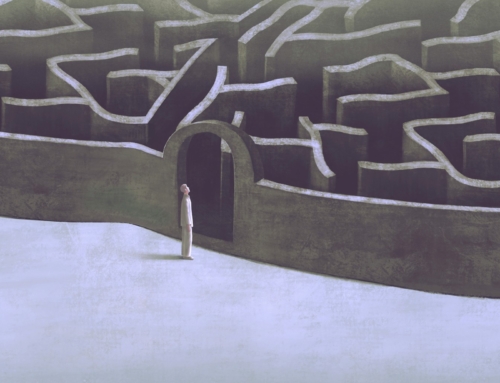Attachment-Based Therapy (ABT) is a form of psychotherapy that aims to address the issues people face as a result of their attachment styles. It is drawn from the influential work of British Psychologist, Psychiatrist, and Psychoanalyst John Bowlby’s attachment theory.
 We’re only as needy as our unmet needs. – John Bowlby
We’re only as needy as our unmet needs. – John Bowlby
Attachment theory aims at explaining and predicting relational behaviors that people exhibit as a result of first relational encounters with caregivers. Bowlby argues that the closer and more stable relationships we have as infants, the greater the possibility for us to form long-lasting and fulfilling relationships with others when we grow.
Unfortunately, the opposite is also true, his work also shows how negative and disruptive relationships with caregivers in early life can deeply wound individuals and hinder their ability to form and sustain healthy relationships. Depending on how we were raised and if we experienced any form of trauma in childhood, below are the attachment styles proposed by John Bowlby.
Secure Attachment. This is the attachment style we all aim to have. These individuals are comfortable in their skin and confident in their relationships. They can form healthy and balanced relationships. They are believed to have been raised by caregivers who were consistent, available, and responsive. They have no fear of intimacy and can trust themselves and others.
Dismissive-Avoidant Attachment. These are individuals who struggle with intimacy and closeness. They always want to keep people at arm’s length. Their way of relating can sometimes come off as aloof as they are emotionally distant and unresponsive.
They are believed to have grown up in an environment that did not foster close relationships nor was there emotional closeness. Their caregivers are believed to have been stoic. They become self-reliant because they cannot rely on anyone to be there for them.
Anxious-Preoccupied Attachment. Individuals with anxious attachment styles are fearful of rejection and abandonment. They are constantly anxious that their romantic partners might leave, or fear they do not love them as much, hence they become needy, clingy, and sometimes demanding.
 This might be the result of having caregivers who were inconsistent and unpredictable in their responses. This could be a parent with a mental health issue or battling with an addiction. Because of this, they are never quite sure of their worth in other people’s eyes hence they often struggle with low self-esteem.
This might be the result of having caregivers who were inconsistent and unpredictable in their responses. This could be a parent with a mental health issue or battling with an addiction. Because of this, they are never quite sure of their worth in other people’s eyes hence they often struggle with low self-esteem.
Disorganized Attachment. People with disorganized attachment styles are conflicted about relationships. They yearn for emotional intimacy but also fear getting hurt and rejected. This is why there is the push-and-pull dance. One day they can be affectionate and present, but this closeness can soon be followed by periods of avoidance. These individuals could have suffered abuse as children or had cold caregivers who were not present for their needs.
Goals of attachment-based therapy.
Attachment-Based Therapy aims to address the maladaptive relational behaviors that are a result of our attachment styles. By improving the person’s attachment styles, there is a renewed sense of hope as they start to learn how to relate to others healthily and how to heal from past hurts. Below are some goals of ABT:
Build a corrective experience. The relationship between the client and therapist is quite important. Individuals coming for sessions can experience a healthy and secure relationship dynamic. This renews hope and provides a new perspective on how relationships should and can be.
Education. ABT is a specific form of psychotherapy that focuses on the client’s attachment styles. The first sessions might be an opportunity to be educated about what they are, how they affect our relationships as adults, and how it relates to their situation.
If it’s a couple that goes for ABT, they will not only understand themselves but their partners as well. Both will be able to treat each other with empathy and compassion as they work through their relational difficulties.
Treatment of other mental health issues. The problems brought about by our attachment history could be damaging to our mental health. Some people might suffer from anxiety, OCD, depression, or eating disorders. ABT will address any other conditions and work on a personalized treatment plan,
Recognizing your attachment style. Through a series of assessments, the therapist can identify the client’s attachment style to have an individualized treatment plan that caters to a client’s needs. A secondary benefit to knowing one’s attachment style is that it brings about self-awareness, insight, and an understanding of how one interacts with others.
 Dealing with trauma. Some attachment styles are the result of unresolved traumatic experiences that happened in childhood. Through ABT, one can confront past trauma in a safe environment. They will also be equipped with healthy coping skills.
Dealing with trauma. Some attachment styles are the result of unresolved traumatic experiences that happened in childhood. Through ABT, one can confront past trauma in a safe environment. They will also be equipped with healthy coping skills.
Assessing effects. Clients explore how their attachment style might have contributed to how they relate to others, discover unhealthy patterns they created to cope, and learn to break free from disruptive emotional cycles. Knowing the effects one’s attachment history has on them can result in the ability to find peace. Equipped with knowledge, they will feel a sense of control over their lives again and hence boost self-confidence.
Emotional regulation skills. Clients with anxious or disorganized attachment styles experience intense emotions that can be hard to control. ABT aims to teach these clients how to regulate their emotions, identify their triggers, and respond in a more calm and regulated manner.
Relationships skills. One aim of ABT is to give clients tools on how to relate with themselves and others. After being assessed, clients will know which attachment style they fall into. This will create an understanding of their thought patterns and destructive relational behaviors, and help them identify different responses which will empower them to implement change.
Building communication skills. The ability to communicate is usually lost by those who have had adverse childhood experiences that result in attachment issues. One of the aims of ABT is to equip clients with the ability to effectively communicate their needs, boundaries, discomforts, and fears in a healthy way that fosters closeness and intimacy.
Who can benefit from Attachment-Based Therapy?
Though it is not for everyone, ABT has significant benefits for some. Those who might benefit from ABT include:
- Individuals with a history of adverse childhood experiences and or trauma.
- Those who struggle with insecurities, fear of abandonment, and rejection in relationships.
 People struggling with PTSD, anxiety, or depression in relationships.
People struggling with PTSD, anxiety, or depression in relationships.- Couples and individuals who are struggling with trust issues.
- Those who constantly repeat unhealthy relationship patterns.
- Those people termed serial daters cannot function if they are not in a relationship. They could also be struggling with codependency.
- Those who were adopted or were raised through the foster system.
- Couples who want to know each other better by getting an understanding of each other’s attachment styles.
- Those seeking personal growth by getting an in-depth understanding of who they are as relational beings.
- Parents and Caregivers can benefit by understanding their role in building secure attachments for those they care for to break cycles.
- Individuals who struggle with emotional regulation in relationships.
- People who feel they are not good enough to be loved or cared for.
Treatment methods used in attachment-based therapy.
A person’s treatment plan and treatment methods are a result of that individual’s diagnosis and unique life circumstances. The list below indicates some of the treatment methods that might be incorporated when one undergoes Attachment-Based Therapy
- Trauma-Focused Cognitive-Behavioral Therapy (TF-CBT)
- Narrative Therapy
- Internal Family Systems Therapy (IFST)
- Couples Therapy
- Emotionally Focused Therapy (EFT)
- Dialectical Behavioral Therapy (DBT)
- Eye Movement Desensitization and Reprocessing (EMDR)
Next steps.
Trying to work through issues of attachment alone can be hard without the right professional help. If you want to know more about attachment theory, and how it might be influencing how you relate, contact our reception team today to schedule an appointment with me or one of the other counselors in our online counselor directory.










